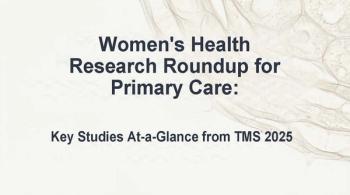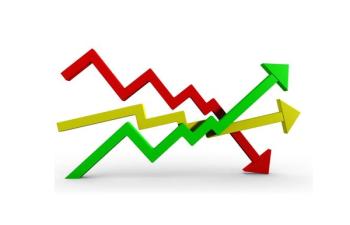
Stroke Risk in Women: A Fast, 5-Question Quiz
Identifying the unique symptoms and risk factors for stroke in women is key to providing effective care. Answer these 5 questions to see how much you know.
One in 5 women in the US will have a stroke in their lifetime and the percentage of strokes in women aged ≤45 years is increasing.2 The majority of stroke incidence can be linked to common risk factors seen in both women and men, however, there are a number of risk factors and symptoms that are specific to women. In honor of May being National Stroke Awareness Month, we have compiled the quick quiz below to test your knowledge on the different symptoms and risk factors that can increase a woman's risk for stroke.
1. Compared to men, the risk of stroke in women is:
A. Higher
B. Lower
C. About the same
D. Unknown
Answer: A. Higher. Risk for stroke is higher in women vs men. Each year, 55 000 more women than men in the US have a stroke; stroke is the third leading cause of death in women, and the fifth leading cause of death in men.1 Almost 60% of stroke deaths happen in women and almost twice as many women die each year from stroke than from breast cancer.2
2. Symptoms of stroke that are unique to women include all of the following, except:
A. Hiccups
B. Hallucinations
C. Pronator drift
D. Shortness of breath
E. Fainting
Answer: C. Pronator drift. According to the National Stroke Association, symptoms of stroke that may be unique to women include loss of consciousness or fainting, general weakness, shortness of breath, confusion, unresponsiveness, disorientation, sudden behavior change, agitation, hallucination, nausea/vomiting, pain, seizures, and hiccups.1 Common stroke assessment tools and registries currently recognize between 1 and 4 of the 11 symptoms unique to women, compounding the problem of delayed recognition of stroke in women.3
3. Which of the following is a risk factor for stroke that affects a much larger number of women than men?
A. High blood pressure
B. Migraine with aura
C. Diabetes
D. High cholesterol
Answer: B. Migraine with aura. Migraine with aura is linked to about 2.5 times increased risk for stroke in women.1 Women are 2-3 times more likely to suffer from migraine than men.4 Other risk factors for stroke that are unique to women include birth control pills, pregnancy, and combined progestin-estrogen hormone replacement therapy. General risk factors for stroke include family history of stroke, high blood pressure, high cholesterol, diabetes, smoking, lack of exercise, and being overweight.1
4. Increased stroke risk in women has been associated with which of the following?
A. Early age at menarche
B. Late age at menarche
C. Early menopause
D. A and B
Answer: D. A and B. Results from the Million Women Study, which included 1.2 million women in the UK, suggest that women who experienced menarche either early (aged ≤10 years) or late (aged ≥17 years) may be at increased risk for stroke.5 Results from the Nurses Health Study suggest that a shorter reproductive lifespan may be linked to increased risk for coronary heart disease or stroke for both natural and surgical menopause.6
5. Antiandrogen therapy in transgender women (transwomen) greatly increases the risk for stroke.
A. True
B. False
Answer: B. False. According to a recent review, antiandrogen therapy in transwomen does not seem to increase the risk for stroke. Studies have linked exogenous estrogen therapy to increased thromboembolic risk in transwomen, but results on risk of stroke have been inconsistent. Much of the data, however, come from studies about postmenopausal hormone therapy in women, and further research is needed. In the meantime, the authors recommend a high index of suspicion for thromboembolic events in transwomen on estrogen therapy, as well as evaluation of cardiovascular risk and counseling about smoking cessation.7
References:
1. National Stroke Association. Women and stroke.
2. Centers for Disease Control and Prevention. Women and stroke.
3. Colsch R, Lindseth G.
4. Buse DC, Loder EW, Gorman JA, et al.
5. Million Women Study Collaborators, Canoy D, Beral V, et al.
6. Ley SH, Li Y, Tobias DK, et al.
7. Demel SL, Kittner S, Ley SH, McDermott M, Rexrode KM.
Newsletter
Enhance your clinical practice with the Patient Care newsletter, offering the latest evidence-based guidelines, diagnostic insights, and treatment strategies for primary care physicians.


















































































































































































































































































